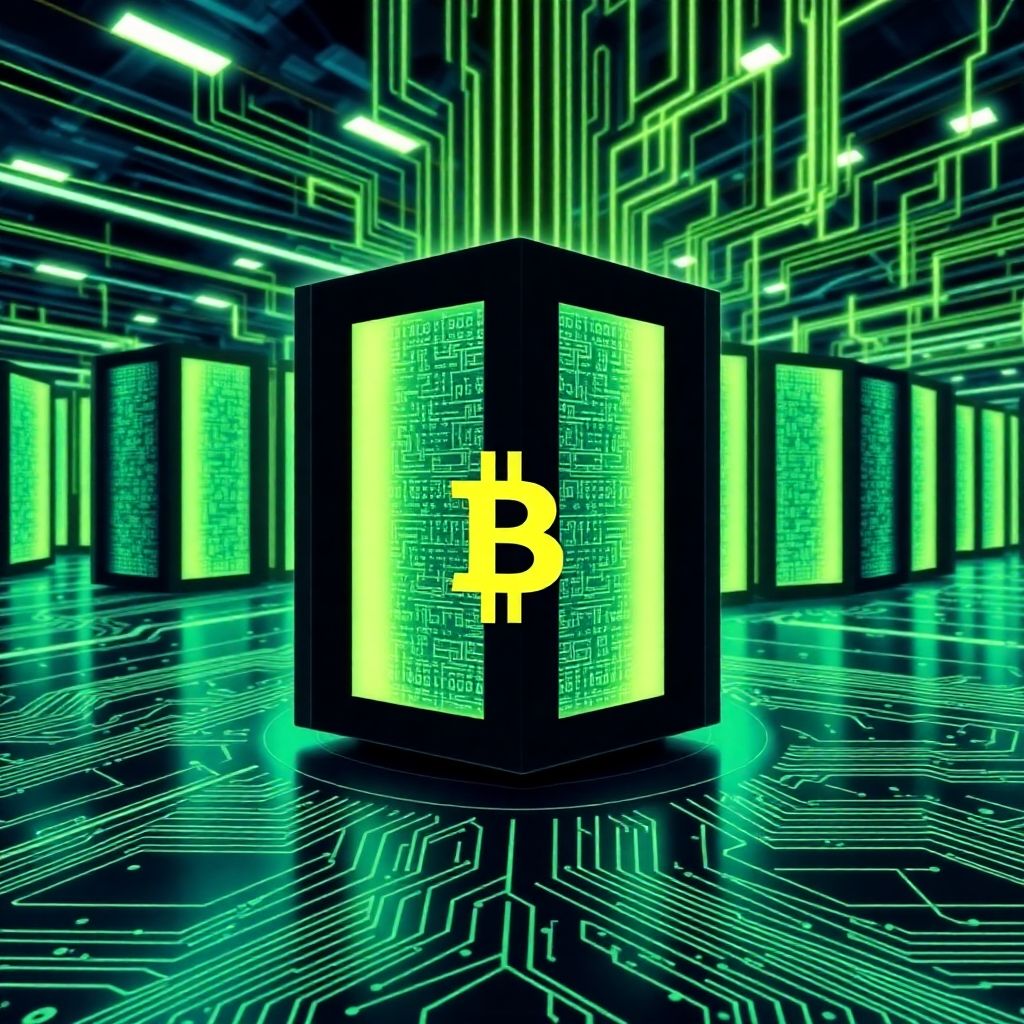Riot Platforms Shifts Focus from Bitcoin Mining to AI Infrastructure Amid Record Revenues
Riot Platforms has reported an all-time high in revenue for the third quarter, driven by a notable surge in Bitcoin production. However, the company now positions Bitcoin mining not as its ultimate objective, but rather as a stepping stone toward a broader ambition: building large-scale data centers to support artificial intelligence (AI) operations.
During its Q3 2024 earnings call, Riot’s Vice President of Investor Relations, Josh Kane, emphasized that the company’s long-term strategy is no longer centered solely around cryptocurrency mining. Instead, Riot is aiming to “monetize megawatts” by repurposing its energy assets to support the development of high-performance computing infrastructure.
“As our business model evolves, so does our utilization of resources. Bitcoin mining has been instrumental in securing valuable energy contracts, but our mission has expanded. We’re now focused on extracting the highest possible value from our energy capacity,” Kane explained.
Despite this strategic pivot, Riot’s Q3 earnings demonstrated the continued strength of its Bitcoin operations. The company mined 1,406 BTC over the quarter—a 27% increase compared to the same period last year—bringing its total Bitcoin holdings to 19,287 BTC, valued at over $2.1 billion based on current market prices.
Revenue for the quarter reached a record $180.2 million, marking a 112.5% year-over-year increase. Net income also saw a remarkable turnaround: from a $154.4 million loss in Q3 2023 to a $104.5 million profit in Q3 2024. Approximately 90% of this revenue came from Bitcoin mining, underscoring the firm’s continued reliance on digital assets, even as it transitions toward AI-focused infrastructure.
Kane acknowledged this dependency but noted that the company intends to use the profits from Bitcoin mining to fund its broader ambitions in the AI sector. “Our mining operations provide steady cash flow and access to low-cost electricity, which we intend to leverage as we build out our state-of-the-art data center facilities,” he said.
Earlier this year, Riot began implementing its diversification strategy by halting further expansion of its mining operations in Corsicana, Texas. Instead, the company redirected its focus to establishing a high-capacity AI data center campus at the same location.
In the latest update, Riot announced the beginning of construction on the first two buildings at the Corsicana Data Campus. These structures will contribute a combined 112 megawatts of critical IT data center capacity. This development marks the initial phase of a larger plan to transform the site into a 1-gigawatt utility-scale data center campus.
“Our goal is to ensure that every megawatt of power we’ve secured is used efficiently,” said CEO Jason Les. “We are actively working to repurpose all available land and energy resources at Corsicana to serve the growing demand for AI computing. The endgame is to develop a 1-gigawatt data center that can support the next generation of high-performance workloads.”
Why the Shift Toward AI Infrastructure Makes Strategic Sense
Riot’s transition aligns with broader industry trends, where companies that originally focused on cryptocurrency are now seeking to diversify their business models. As AI technologies such as generative models, machine learning, and advanced analytics become more power- and compute-intensive, the demand for robust data center infrastructure is surging.
Energy costs and availability have become critical factors for data center operations, particularly for AI training and inference workloads. Riot’s existing expertise in negotiating power contracts and operating large-scale energy-consuming facilities gives it a competitive edge in the emerging AI infrastructure space.
Furthermore, by leveraging its mining revenue to fund capital-intensive data center development, Riot reduces its exposure to the volatility of Bitcoin prices. This dual-strategy approach allows the firm to benefit from the profitability of mining while building a more stable, utility-based revenue stream from AI services.
The AI Gold Rush: Opportunity or Overextension?
While Riot’s AI-focused pivot appears promising, some analysts caution that entering the data center market—particularly one tailored for AI—is not without significant risks. The sector is highly competitive, with established players like Microsoft, Amazon, and Google investing billions into their own AI infrastructure.
To succeed, Riot will need to differentiate itself through cost-efficiency, scalability, and perhaps partnerships with AI startups or enterprise clients. Securing long-term contracts with AI firms looking for reliable infrastructure could be the key to ensuring the profitability of its data center ventures.
Bitcoin Mining: Still a Core Asset—for Now
Despite its expanded vision, Riot has made it clear that Bitcoin mining is not being abandoned. Instead, it will function as a financial engine for the company’s broader ambitions. With a current holding of over 19,000 BTC, Riot remains one of the largest public holders of Bitcoin, putting it in a strong liquidity position to support its infrastructure investments.
Moreover, Riot’s mining operations benefit from long-term power agreements that offer stable and predictable costs—an advantage that remains crucial in an industry where electricity is the largest operational expense.
Looking Ahead: A Balanced Strategy
Riot’s evolving business model reflects a pragmatic response to market realities. By maintaining its core Bitcoin mining business while expanding into AI infrastructure, the company is positioning itself for resilience. This dual-path strategy not only diversifies revenue streams but also leverages existing assets in innovative ways.
As the landscape for digital assets and next-generation computing continues to converge, Riot Platforms appears prepared to play a role in both domains. Whether its vision of a 1-gigawatt AI campus becomes a reality remains to be seen, but the groundwork is undoubtedly being laid for a future beyond Bitcoin.

